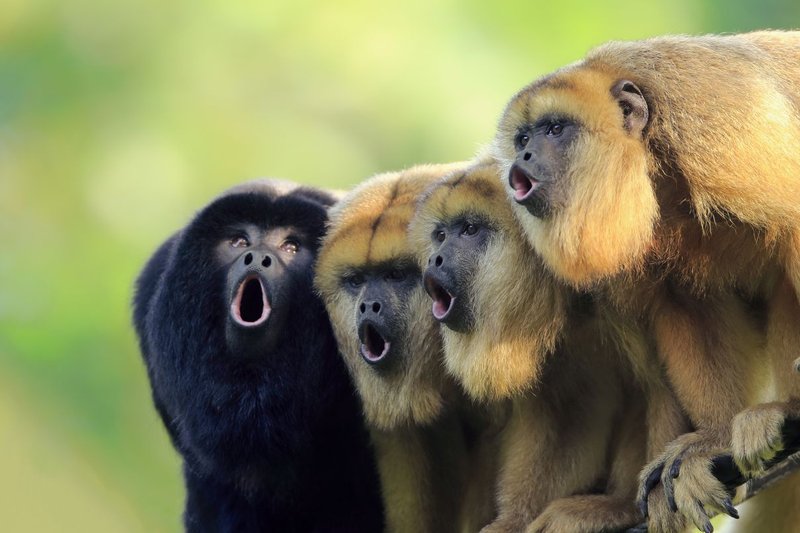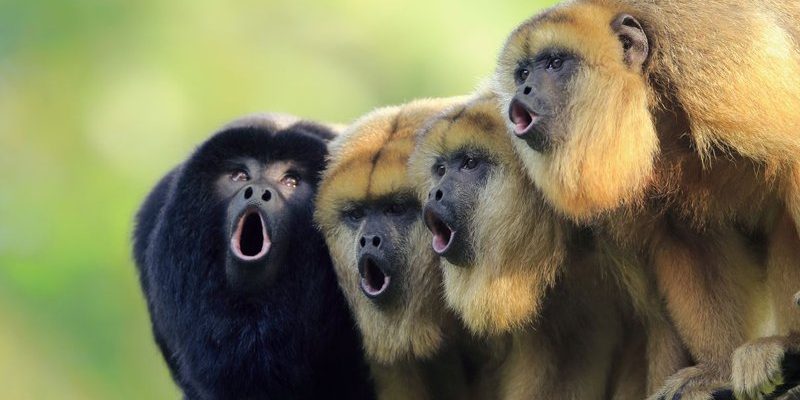
Imagine walking through the jungle and suddenly hearing a deep, guttural sound booming through the trees. That’s the howler monkey, often called the loudest land animal. Their raucous calls can travel for miles, acting like an orchestra conductor, marking their territory, and communicating with fellow howlers. But beyond their vocal talents, howler monkeys participate in important ecological processes that support the health of their habitat. Let’s dive deeper into this vibrant world to explore how howler monkeys contribute to their ecosystem.
Understanding the Howler Monkey
Howler monkeys belong to the family Atelidae, and they’re predominantly found in Central and South America. Known for their distinctive long tails and loud calls, these primates live in social groups. About 15 different species exist, each with its unique adaptations and behaviors.
These monkeys primarily feast on leaves, fruits, and flowers, showcasing a herbivorous diet that relies heavily on the rainforest’s foliage. Their unique digestive system allows them to break down tough plant materials, which means they can thrive on food sources that are less appealing to other animals. This specialization is what makes them a vital part of the ecosystem—they help manage plant growth by consuming vast amounts of leaves, ensuring it doesn’t become too dense.
The Role of Howler Monkeys in Seed Dispersal
You might be wondering why seed dispersal is important. Well, think of it this way: when animals eat fruits, they often unintentionally help the plants reproduce. Howler monkeys play a huge part in this process. As they munch on fruits, they consume the seeds and carry them to new areas.
Once these monkeys move, they may eventually excrete the seeds, often far from the original tree, giving them a new chance to grow. This acts like a natural planting service! Without animals like howler monkeys, many tree species would struggle to expand their populations. As a result, they help maintain biodiversity and promote a healthy ecosystem.
Howler Monkeys and Their Habitat
Howler monkeys are crucial to maintaining the stability of their habitat. Their feeding habits not only control plant overgrowth but also promote the growth of certain tree species. This, in turn, supports various other animals by providing food and shelter.
Furthermore, their loud calls serve as a way to establish territory and communicate with other groups. When howlers vocalize, it’s not just noise; it’s a message to neighboring monkeys and a way to avoid conflicts. This communication can prevent overpopulation in specific areas, which can lead to resource depletion. By regulating their presence, howler monkeys help create a balanced ecosystem.
Howler Monkeys as Indicators of Ecosystem Health
Let’s consider how howler monkeys serve as indicators of ecosystem health. Just like the canary in the coal mine, these monkeys show us when something’s wrong. If their populations decline, it often signals that the local environment is facing issues, such as deforestation or habitat loss.
Healthy howler monkey populations indicate a thriving ecosystem with adequate food and space. When researchers study monkey populations, they gather insights about the broader health of the rainforest. This connection highlights how intertwined species are in maintaining ecological balance.
Threats to Howler Monkeys and Their Ecosystems
Despite their importance, howler monkeys face numerous threats that jeopardize their survival and, by extension, their ecosystems. Deforestation is one of the biggest challenges they encounter. As humans clear forests for agriculture and development, howler monkeys lose their homes, leading to declining populations.
Habitat fragmentation is another significant issue. When forests are divided into smaller patches, it isolates monkey groups, making it difficult for them to find mates and food. Additionally, hunting poses a significant risk, especially in areas where their meat is considered a delicacy. These threats highlight the urgent need for conservation efforts to protect howler monkeys and their habitats.
Conservation Efforts for Howler Monkeys
Efforts to conserve howler monkeys and their habitats are crucial in ensuring they continue to play their role in the ecosystem. Organizations around the world are working to protect rainforests, advocating for sustainable land use and responsible agriculture.
Community education programs are also essential, helping locals understand the importance of these monkeys. When people see how vital howler monkeys are to their environment, they’re more likely to support conservation initiatives. Protected areas, like national parks and reserves, also play a key role by creating safe spaces where these monkeys can thrive without human interference.
The Future of Howler Monkeys and Their Ecosystem Roles
Looking ahead, the future of howler monkeys depends on our actions today. Their roles in the ecosystem are not just interesting facts; they’re critical for maintaining biodiversity and environmental health. If we can unite in efforts to protect their habitats and address the threats they face, howler monkeys will continue to thrive.
By preserving these incredible creatures and their environment, we ensure that the vibrant tapestry of the rainforest remains intact for generations to come. So next time you hear a howler monkey’s haunting call echoing through the jungle, remember—their role is far more significant than just making noise.
In conclusion, howler monkeys are much more than just vocal entertainers of the rainforest. They are vital players in seed dispersal, habitat maintenance, and indicators of ecological health. By understanding their importance, we can work together to protect them and, ultimately, our planet’s rich biodiversity.

